Explore the Hidden Underworld of Texas Caverns
Texas has a reputation for magnificent wide-open landscapes, majestic skyscapes, and stunning topography that ranges from western mountains to thick eastern forests. But there’s another side to the state’s beauty that often goes unnoticed and unexplored: the underground.
Texas’ unique geological history has created a variety of unique cavern formations throughout the state. Here’s what awaits you in the alluring underworld adventures of Texas caverns.
Cascade Caverns
Located near Boerne, the Cascade Caverns were first discovered by the Lipan Apache, who used the caves for shelter in the 1700s. The caves were later found by early Texas settlers who, as early as the 1840s, carved their initials into some of the stalactite formations. In the 1870s, the caverns inspired a German-language novel, “Ein Verfehltes Leben,”about a hermit who dwelt there. Today, the Cascade Caverns remain one of the most popular sites for amateur spelunkers looking for a taste of Texas’ hidden underground worlds.
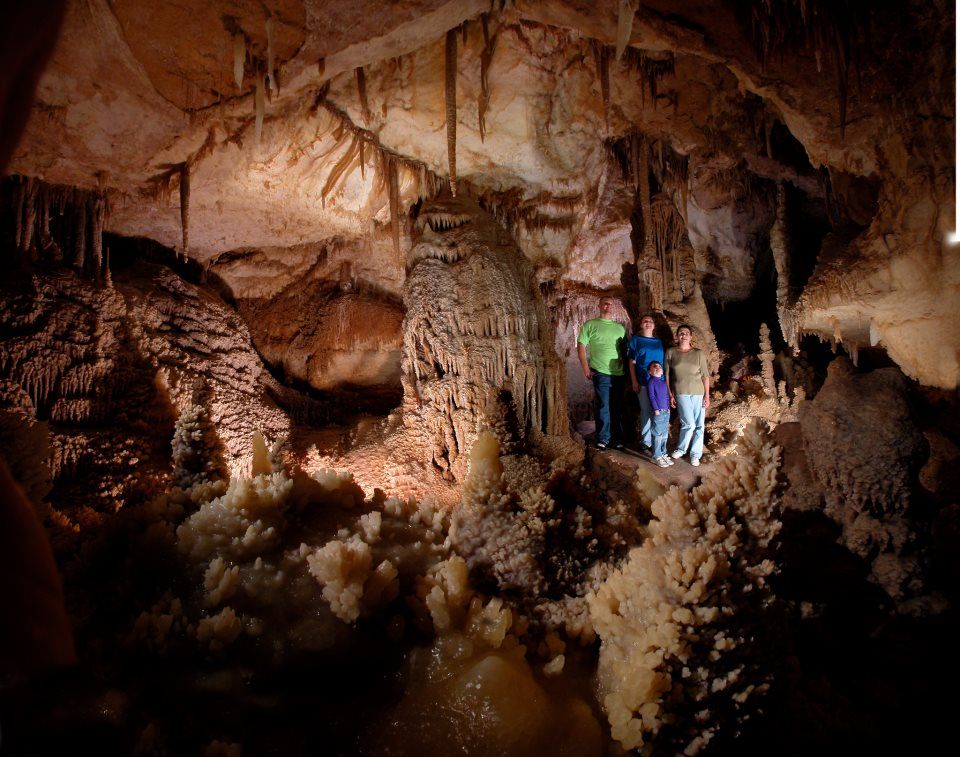
Caverns of Sonora
One day in 1905, a dog chased a raccoon down a 20-inch hole. When its owners went looking for their dog — or so the legend goes — they stumbled upon one of the most magnificent cavern formations in North America. Formed approximately 2 million years ago by sulfuric gases that rushed to the surface of the earth, the Caverns of Sonora are a National Natural Landmark and are widely considered to be the state’s most beautiful underground spot. A two-hour tour takes visitors 155 feet beneath the surface of the earth and into an ever-changing world — nearly 95% of the cave’s features are still actively being shaped by geologic forces.
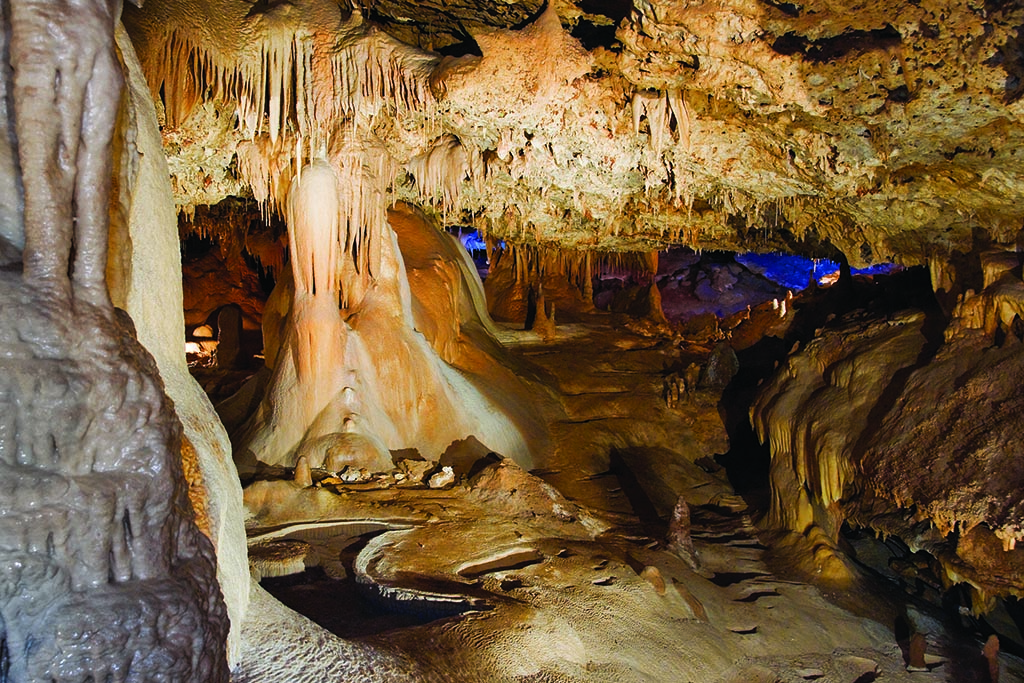
Inner Space Cavern
One of the best preserved and most popular of Texas’ caverns, Inner Space is located about an hour north of Georgetown. It features an incredible collection of underground rock formations as well as prehistoric remains of mastodons and wolves. Texas Parks and Wildlife manages the site and offers three tours of different lengths that allow visitors to leave the Texas heat and descend into a subterranean world that remains a cool 72 degrees all year round.
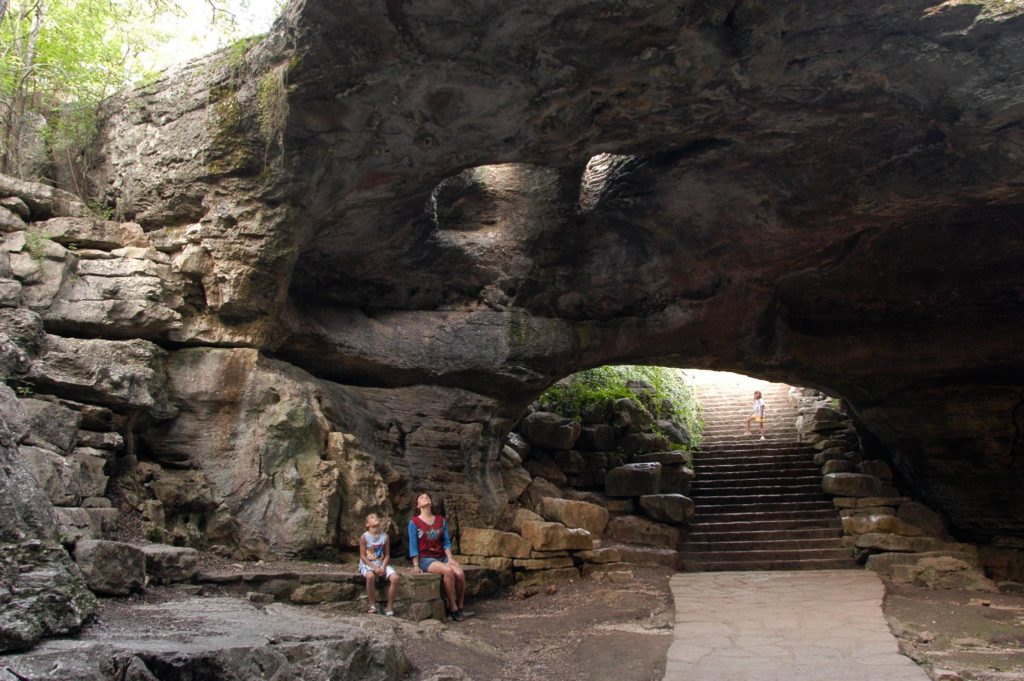
Longhorn Cavern
This Hill Country treasure was formed by an underground river that carved out an intricate network of caves and passageways that twist beneath Burnet ranchland. The caverns were mapped and lit in the 1930s by the Civilian Conservation Corps, and their work has helped make Longhorn one of the most accessible of Texas’ caverns.
Kickapoo Cavern
Located near Brackettville on the southwestern edge of Edwards Plateau, Kickapoo is notable for its massive, 16-story underground chamber. When traveling preacher Hal Cunningham first explored the cave in the 1880s, he was so impressed by the huge underground space that he described “the Egyptian darkness of the subterranean wonder.” Today, visitors can enjoy scurrying over underground boulders, wandering through stalagmite mazes, and visiting the nearby Stuart Bat Cave, which is home to thousands of Mexican free-tailed bats.
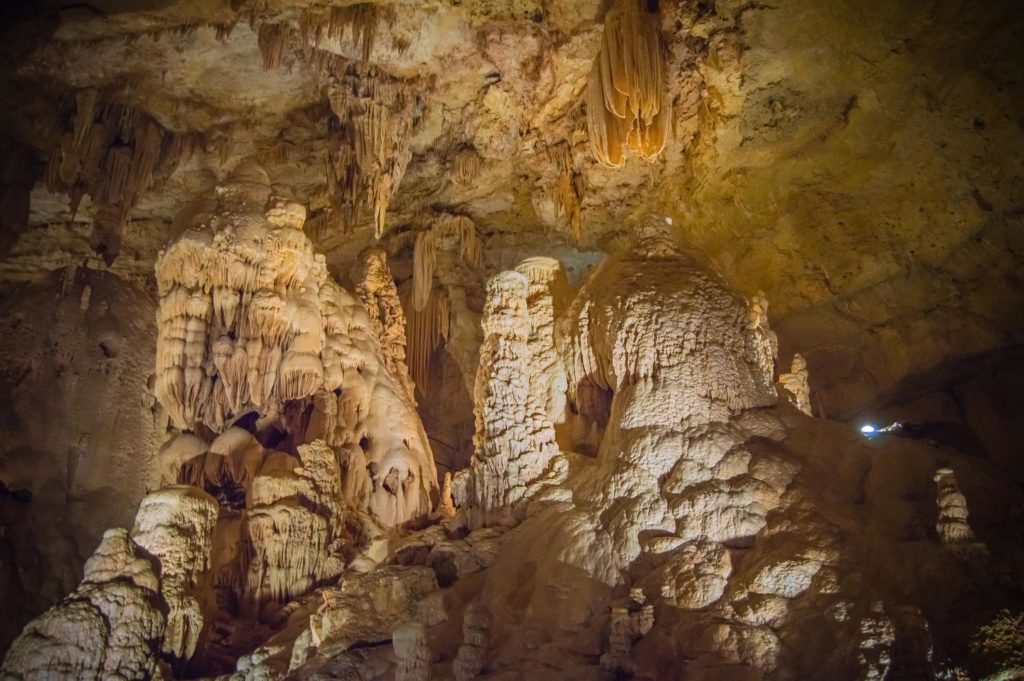
Natural Bridge Caverns
The underground formations located near New Braunfels were found in the 1960s, when four students from St. Mary’s University went hunting for caves. They spent hours crawling through tight passageways before they finally stumbled upon a massive open space full of flowstones, stalactites, chandeliers, stalagmites, and soda straws.
Today, Natural Bridge Caverns is accessible through an entrance that was dug out to accommodate visitors. Adventurous visitors should take advantage of the Hidden Passages Adventure Tour, which requires a rope harness, helmet, and headlamp to explore some of the deepest corners of the cavern and a chance to descend down a 160-foot shaft.
Underground Caves
In addition to massive underground caverns, Texas boasts some intriguing cave formations that offer their own unique views into the state’s underworld. Here are two worth exploring.
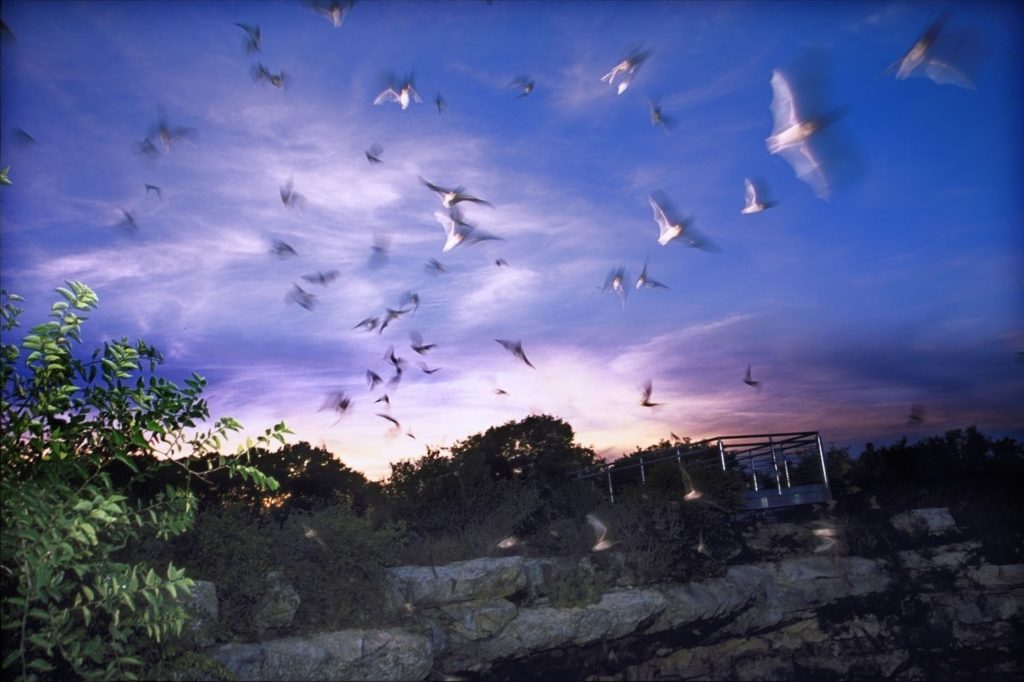
Devil’s Sinkhole: Long before humans stumbled upon Texas’ largest single-room cave, Mexican free-tailed bats called it home. The site remains an important bat sanctuary — in fact, there are so many bats using the cave that some of the formations are covered in several feet of guano. The cave itself is around 350-feet deep, dropping down a long, chimneylike shoot before opening into a wide, bowl-shaped underground chamber. The real excitement of visiting the Devil’s Sinkhole happens at dusk, when an enormous cloud of bats emerges each evening in a spectacular demonstration that has been likened to a “smokelike tornado.”
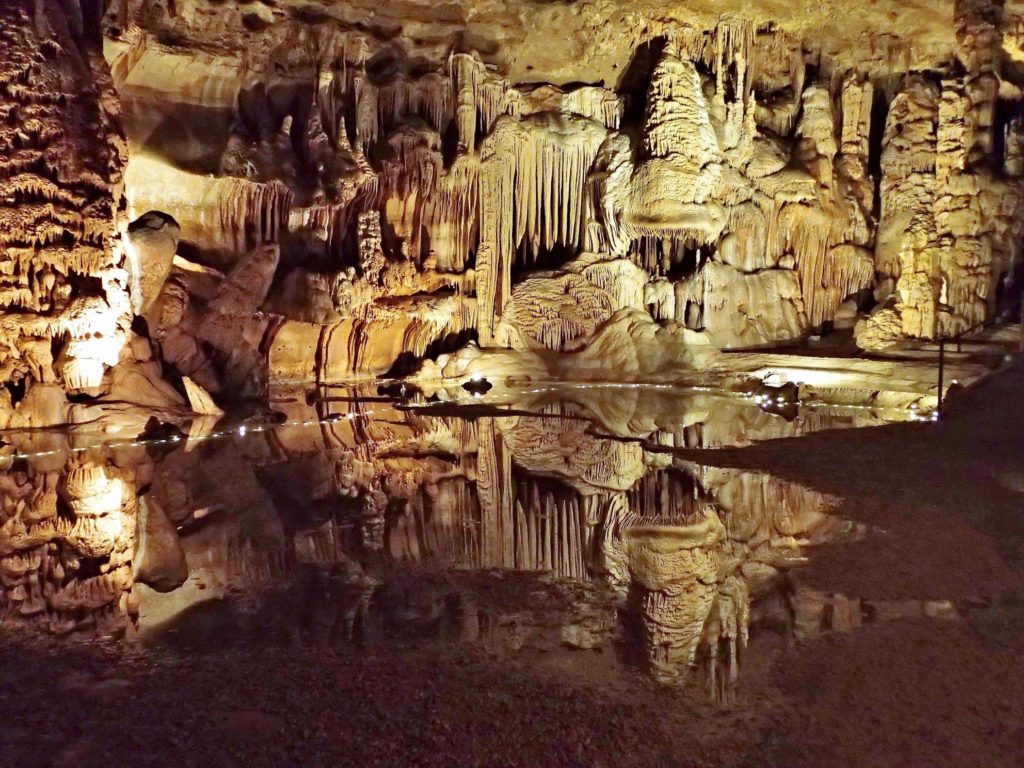
Cave Without a Name: The Cave Without a Name includes six cavernous rooms and an underground stream that cuts the limestone. Visitors can enjoy the beauty of enormous stalactites and stalagmites, as well as soda straws, rimstone dams, and flowstone, all within a chilly underground world that hovers around 66 degrees all year.
Want to see bats without descending into subterranean darkness? Here’s our guide to a homemade bat box that attracts them to your yard.
© 2020 Texas Farm Bureau Insurance



